Related Research Articles
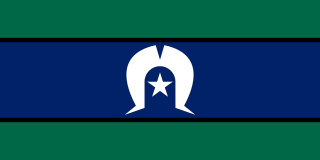
The Torres Strait Islands are an archipelago of at least 274 small islands in the Torres Strait, a waterway separating far northern continental Australia's Cape York Peninsula and the island of New Guinea. They span an area of 48,000 km2 (19,000 sq mi), but their total land area is 566 km2 (219 sq mi).

Torres Strait Islanders are the Indigenous Melanesian people of the Torres Strait Islands, which are part of the state of Queensland, Australia. Ethnically distinct from the Aboriginal peoples of the rest of Australia, they are often grouped with them as Indigenous Australians. Today, many more Torres Strait Islander people live in mainland Australia than on the Islands.
Native title is the set of rights, recognised by Australian law, held by Aboriginal and Torres Strait Islander groups or individuals to land that derive from their maintenance of their traditional laws and customs. These Aboriginal title rights were first recognised as a part of Australian common law with the decision of Mabo v Queensland in 1992. The doctrine was subsequently implemented and modified via statute with the Native Title Act 1993.

Lowitja O'Donoghue, also known as Lois O'Donoghue and Lois Smart, was an Australian public administrator and Indigenous rights advocate. She was the inaugural chairperson of the Aboriginal and Torres Strait Islander Commission (ATSIC) from 1990 to 1996. She is known for her work in improving the health and welfare of Indigenous Australians, and also for the part she played in the drafting of the Native Title Act 1993, which established native title in Australia.
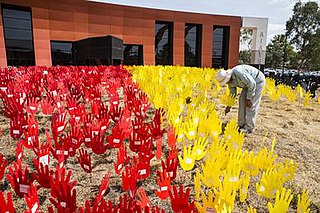
The Australian Institute of Aboriginal and Torres Strait Islander Studies (AIATSIS), established as the Australian Institute of Aboriginal Studies (AIAS) in 1964, is an independent Australian Government statutory authority. It is a collecting, publishing, and research institute and is considered to be Australia's premier resource for information about the cultures and societies of Aboriginal and Torres Strait Islander peoples.
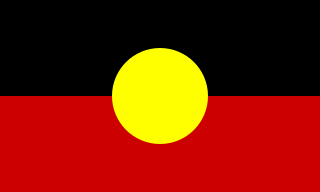
Aboriginal Australians are the various Indigenous peoples of the Australian mainland and many of its islands, excluding the ethnically distinct people of the Torres Strait Islands.
James Ronald Chi was an Australian composer, musician and playwright. His best known work is the 1990 musical Bran Nue Dae, which was adapted for film in 2009.

The Encyclopaedia of Aboriginal Australia: Aboriginal and Torres Strait Islander history, society and culture, edited by David Horton, is an encyclopaedia published by the Aboriginal Studies Press at the Australian Institute of Aboriginal and Torres Strait Islander Studies (AIATSIS) in 1994 and available in two volumes or on CD-ROM covering all aspects of Indigenous Australians lives and world. There are 2000 entries and 1000 photographs, with the CD-ROM having 250 sound items and 40 videos.
Indigenous Australians are people with familial heritage from, or recognised membership of, the various ethnic groups living within the territory of present day Australia prior to British colonisation. They consist of two distinct groups, which include many ethnic groups: the Aboriginal Australians of the mainland and many islands, including Tasmania, and the Torres Strait Islanders of the seas between Queensland and Papua New Guinea, located in Melanesia.
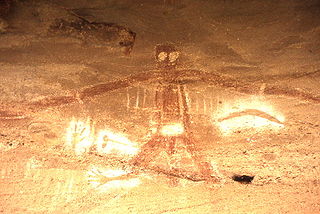
An Australian Aboriginal sacred site is a place deemed significant and meaningful by Aboriginal Australians based on their beliefs. It may include any feature in the landscape, and in coastal areas, these may lie underwater. The site's status is derived from an association with some aspect of social and cultural tradition, which is related to ancestral beings, collectively known as Dreamtime, who created both physical and social aspects of the world. The site may have its access restricted based on gender, clan or other Aboriginal grouping, or other factors.

Henrietta Marrie is a Gimuy Walubara Yidinji elder, an Australian Research Council Fellow and Honorary Professor with the University of Queensland.
The Australian Indigenous HealthInfoNet, formerly National Aboriginal and Torres Strait Islander Health Clearinghouse, is an internet resource that collects, collates, interprets, and presents evidence-derived knowledge on Aboriginal and Torres Strait Islander health in Australia.
Indigenous Australians are both convicted of crimes and imprisoned at a disproportionately higher rate in Australia, as well as being over-represented as victims of crime. As of September 2019, Aboriginal and Torres Strait Islander prisoners represented 28% of the total adult prisoner population, while accounting for 2% of the general adult population. Various explanations have been given for this over-representation, both historical and more recent. Federal and state governments and Indigenous groups have responded with various analyses, programs and measures.

Indigenous health in Australia examines health and wellbeing indicators of Indigenous Australians compared with the rest of the population. Statistics indicate that Aboriginal Australians and Torres Strait Islanders are much less healthy than other Australians. Various government strategies have been put into place to try to remediate the problem; there has been some improvement in several areas, but statistics between Indigenous Australians and the rest of the Australian population still show unacceptable levels of difference.
The Closing the Gap framework is a strategy by the Commonwealth and state and territory governments of Australia that aims to reduce disparity between Aboriginal and Torres Strait Islander peoples and non-Indigenous Australians on key health, education and economic opportunity targets. The strategy was launched in 2008 in response to the Close the Gap social justice movement, and revised in 2020 with additional targets and a refreshed strategy.

Dauan Island is an island in the Torres Strait, Queensland, Australia; it is also known as Cornwallis Island. Dauan Island is also a town and locality in the Torres Strait Island Region, Queensland, Australia. In the 2021 census, the locality of Dauan Island had a population of 131 people.
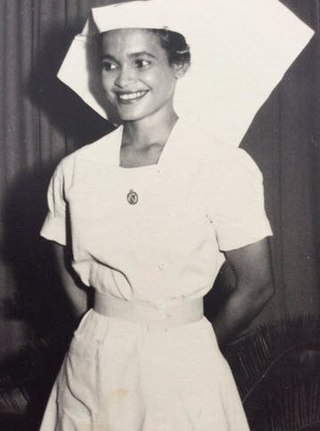
MaryAnn Bin-Sallik is a Djaru Elder and Australian academic, specialising in Indigenous studies and culture. She was the first Indigenous Australian to gain a doctorate from Harvard University.
Patricia Audrey Anderson is an Australian human rights advocate and health administrator. An Alyawarre woman from the Northern Territory, she is well known internationally as a social justice advocate, advocating for improved health, educational, and protection outcomes for Indigenous Australian children.

Masig Island is an island and locality in the Torres Strait Island Region, Queensland, Australia. In the 2021 census, Masig Island had a population of 283 people.
Patricia Lynette Dudgeon is an Aboriginal Australian psychologist, Fellow of the Australian Psychological Society, and a research professor at the University of Western Australia's School of Indigenous Studies. Her area of research includes Indigenous social and emotional wellbeing and suicide prevention. She is actively involved with the Aboriginal community, having an ongoing commitment to social justice for Indigenous people. Dudgeon has participated in numerous state and national committees, councils, task groups and community service activities in both a voluntary and professional capacity.
References
- ↑ Snow, Dudley; Western Australia. Public Health Department (1981), The progress of public health in Western Australia, 1829-1977, Public Health Dept. : distributed by University of Western Australia Press, ISBN 978-0-7244-8478-2
- ↑ "AU WA A36 - Health Department of Western Australia". State Records Office of Western Australia. Retrieved 4 June 2018.
- ↑ "Alteration of Statutory Designations Order (No. 3) 2001" (PDF). Western Australia Government Gazette. 7 September 2001. p. 4995.
